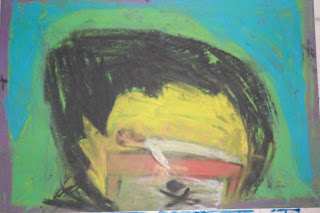Surprisingly, Godly Play is not just for children. Its creator, Jerome Berryman, writes that it is for children ages 2 to 99. And while Godly Play may not be for everyone, I can confirm that it works with adults in a variety of settings. After reading a chapter in Berryman’s book about his pioneering work with Godly Play in hospitals and with anorexia patients, I had a slightly crazy idea.
In 2007, I began volunteering with a non-profit organization that serves women involved in drugs and prostitution. We run a café on the Kurfürstenstrasse, one of Berlin’s most notorious red light districts, that serves as a gathering point and counseling center for the women. (We also work closely with other organizations in the area.) I have a background in voluntary social work that dates back to when I worked with homeless people in college. Through the years, I have always worked with organizations that help people in a holistic way, offering practical as well as spiritual help and support. Many people in dire situations are searching for God in their lives, but don’t know where to start to find Him. In the Christian tradition, one of the classic ways to give spiritual support is to offer a Bible study. Unfortunately, handing drug addicts or street people with very little education a large Bible is intimidating for them. The word “Bible” alone can make them run away as fast as they can, even if they are searching. For this reason, I had the thought that Godly Play might be an answer to the question of how to offer spiritual support. Because it is an oral story-telling method that allows one to draw one’s own conclusions, it is not as scary as a thick book.
I started experimenting in our café in May of 2010 by telling the stories in the Parables of Jesus genre. Since then, I have had all manner of women and even a few men listen to the stories: educated, uneducated, Germans, foreigners, transvestites, etc. Most of the women have been drawn into the stories. One woman from Slovakia told me, “When you first pulled out your figures, I thought this was for small children. Then, I realized that it was not and that I really had to think.” Occasionally, a woman doesn’t like the method at all and that is okay, too. After all, the Gospel is a gift and not something to be forced on anyone.


























